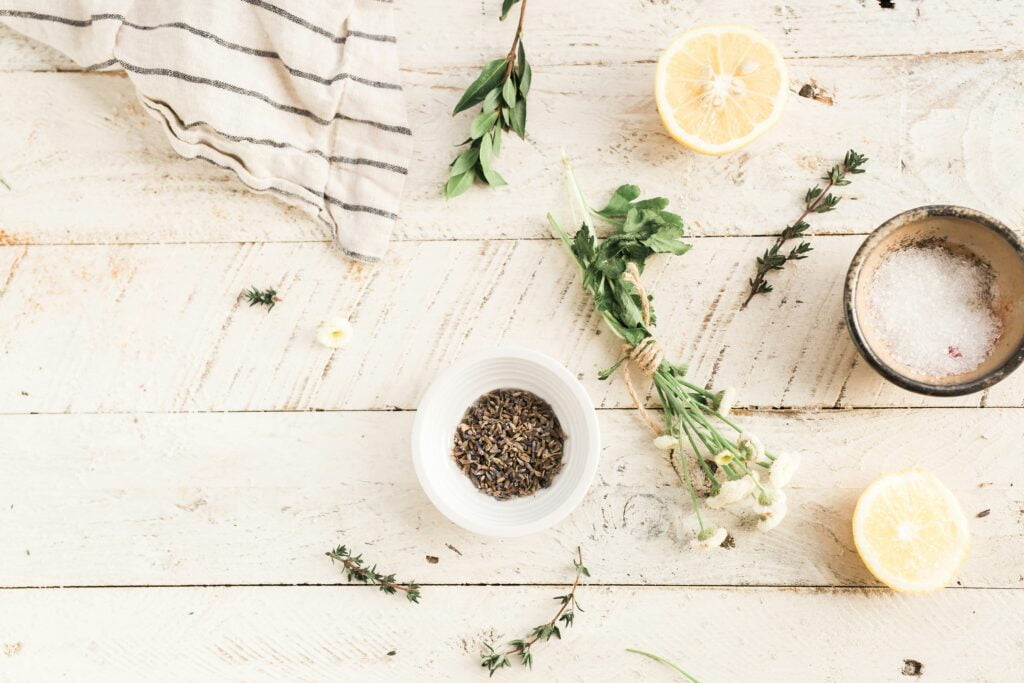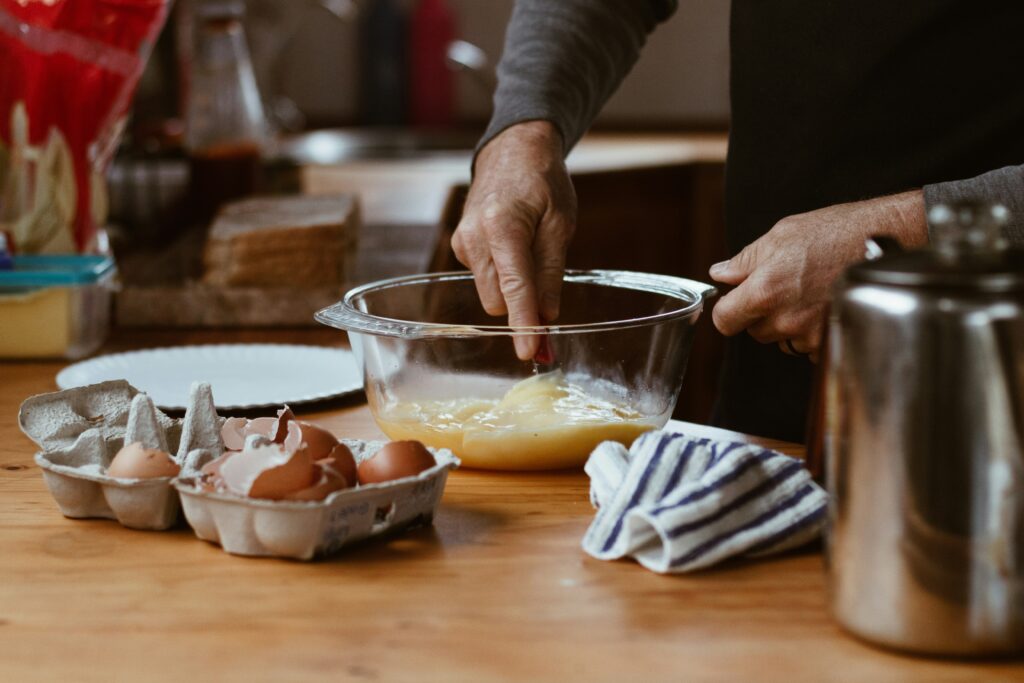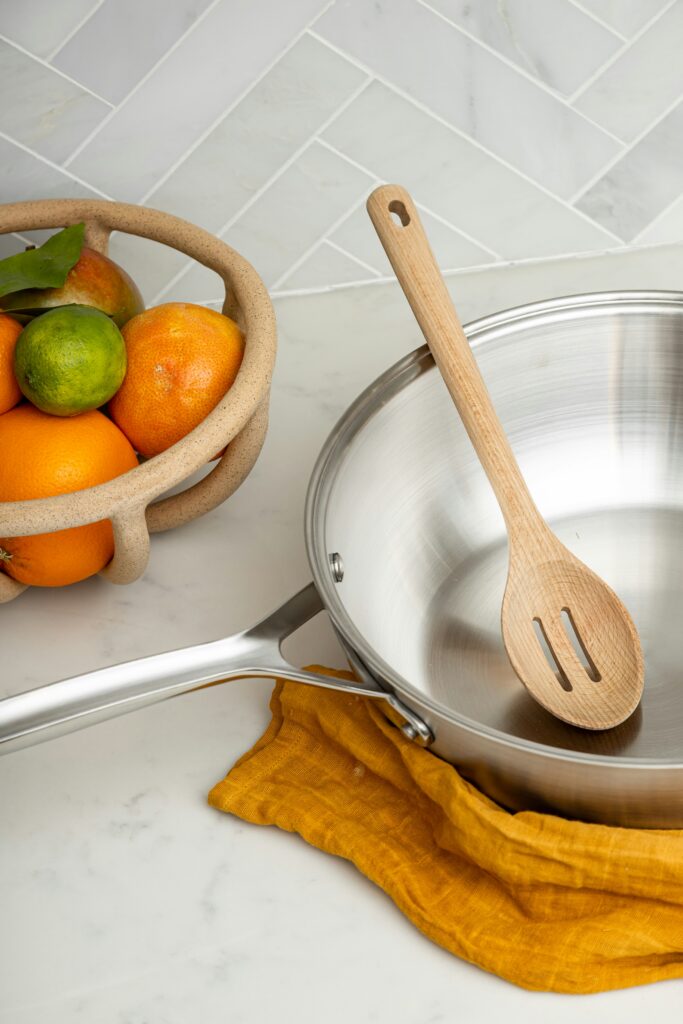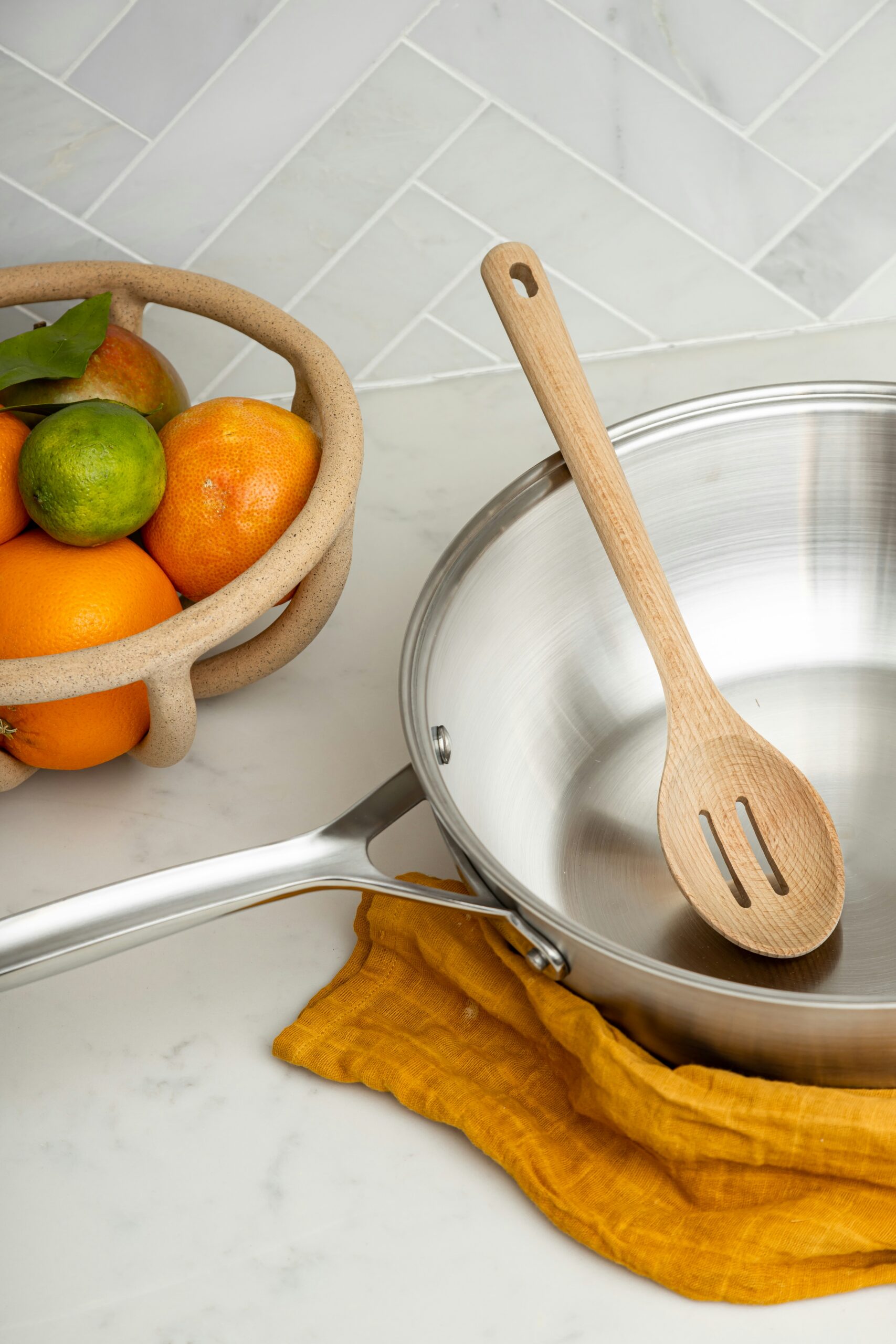Have you ever wondered about the purpose of a basting brush? Well, this article aims to shed some light on this kitchen essential. A basting brush is a versatile tool used in culinary preparations. It is commonly used to apply liquid, such as sauces, marinades, or melted butter, on various foods during cooking. By brushing the desired liquid onto the food, the basting brush helps to enhance flavors, maintain moisture, and create a delicious and enticing glaze. So next time you’re in the kitchen, don’t underestimate the power of the humble basting brush!
Understanding Basting
Definition of basting
Basting refers to the process of moistening or adding flavor to food while it is cooking or roasting. It involves periodically coating the surface of the food with liquid, typically a marinade, sauce, or melted fat, to enhance its juiciness and flavor.
The importance of basting in cooking
Basting plays a crucial role in cooking as it helps to keep the food moist and prevents it from drying out. By continuously basting, the outer layer of the food stays hydrated, resulting in tender and succulent meats or vegetables. Additionally, basting helps to infuse flavors into the food, providing a more delicious and well-rounded taste.
Different types of basting
There are several methods of basting, each with its own unique benefits. Some common types of basting include:
- Brushing: This involves using a basting brush to apply liquid onto the surface of the food.
- Spooning: This method uses a spoon to pour the basting liquid over the food.
- Spraying: A spray bottle is used to mist the basting liquid onto the food.
- Injecting: This technique involves injecting the basting liquid into the interior of the food using a syringe or injector.
Unpacking the Role of a Basting Brush
Detailed description of a basting brush
A basting brush is a kitchen tool specifically designed for the task of basting. It typically consists of a long handle and a brush head made of bristles or silicone. The handle allows for a comfortable grip, while the brush head is used to apply the basting liquid onto the food.
Uses of a basting brush in the kitchen
Basting brushes have a versatile role in the kitchen. Apart from basting, they can also be used for applying glazes, spreading oil or butter, and even for applying egg washes or sauces onto pastries or grilled items. Their soft bristles or silicone heads ensure even distribution of the liquid, making them an essential tool for achieving the desired flavors and textures.
Main functions of a basting brush
The main functions of a basting brush are to:
- Apply liquid evenly: The brush bristles or silicone head allow for an even and controlled application of the basting liquid, maximizing coverage and flavor distribution.
- Retain moisture: By regularly basting with liquids, the brush helps to trap and seal in the moisture in the food, preventing it from drying out.
- Enhance flavor: Basting brushes allow for the infusion of flavors, enabling the food to absorb and develop richer tastes during the cooking process.

Materials of Basting Brushes
Explanation of different types of materials
Basting brushes can be made from various materials, each offering different advantages and disadvantages. The common materials used for basting brushes include:
- Silicone: Silicone brushes are heat-resistant, easy to clean, and do not retain odors or flavors. They are also gentle on delicate surfaces and make spreading liquids a breeze.
- Natural bristles: Basting brushes with natural bristles are typically made from natural fibers such as boar or horsehair. They are known for their ability to absorb and retain liquid, making them ideal for basting. However, they require more care in cleaning and can retain flavors or odors.
- Nylon bristles: Nylon bristles are durable, easy to clean, and are often found in more affordable basting brushes. They are heat-resistant but can be prone to melting if exposed to high temperatures.
Advantages and disadvantages of different materials
- Silicone: Silicone brushes are easy to clean, heat-resistant, and hygienic. However, they may not hold as much liquid as natural bristle brushes.
- Natural bristles: Natural bristle brushes absorb and distribute liquid evenly, but they require more maintenance and can retain odors or flavors if not properly cleaned.
- Nylon bristles: Nylon brushes are affordable, heat-resistant, and durable, but they may not retain as much liquid as other materials and may be more prone to melting.
Choosing the right material for your needs
When choosing a basting brush, consider your cooking preferences and needs. If easy maintenance and heat resistance are important, silicone brushes may be the best choice. If you value liquid absorption and even distribution, natural bristle brushes might be more suitable. Nylon brushes are a practical option, especially for those on a budget.
Designs of Basting Brushes
Different designs available
Basting brushes come in various designs to accommodate different cooking styles and needs. Some common designs include:
- Flat brush: This design features a flat, wide brush head, making it ideal for glazing or applying sauces onto large surfaces.
- Round brush: The round brush design allows for precision basting and is perfect for reaching into crevices or hard-to-reach areas.
- Long-handle brush: A basting brush with a long handle provides more reach and prevents hands from getting too close to heat sources.
How the design affects functionality
The design of a basting brush directly affects its functionality. Flat brushes are efficient for coating larger areas, while round brushes offer better maneuverability. Long-handle brushes ensure safety and convenience when basting over hot grills or in deep ovens. Considering the specific tasks you will be using the brush for will help determine the most suitable design for your needs.
Evaluating design for comfort and effectiveness
When evaluating the design of a basting brush, consider factors such as comfort and effectiveness. The handle should offer a comfortable grip, allowing for easy and controlled movements. The brush head should be securely attached to the handle to prevent it from coming loose during use. Additionally, ensure that the overall design allows for easy cleaning and maintenance.

Safe Use of Basting Brushes
Safety considerations in using basting brushes
To ensure safe use of basting brushes, keep the following safety considerations in mind:
- Heat resistance: Ensure that the materials used in the basting brush are heat-resistant, especially if you will be using it for grilling or high-temperature cooking.
- Avoiding cross-contamination: Clean the brush thoroughly after each use to prevent cross-contamination of flavors and bacteria.
- Proper handling: Use caution when handling hot surfaces or open flames to prevent burns or accidents.
- Child safety: Keep basting brushes out of the reach of children to prevent accidents or misuse.
Risks associated with misuse
Misuse of basting brushes can pose risks such as:
- Contamination: If not cleaned properly, basting brushes can harbor bacteria or transfer flavors from previous uses, leading to food contamination.
- Burns: Careless handling of hot basting brushes or using them on hot surfaces can result in burns or injuries.
- Melting or shedding: Using a basting brush with bristles that melt or shed can contaminate the food being basted and create a potential choking hazard.
Prevention and solutions to common issues
To prevent and address common issues related to basting brushes, it is important to:
- Clean thoroughly: Clean the brush after each use with warm, soapy water to remove any food particles or bacteria. For brushes with removable heads, ensure they are completely dry before reattaching.
- Choose heat-resistant materials: Select a basting brush made from materials that can withstand high temperatures to avoid melting or damage.
- Regular inspection: Regularly inspect the brush for any signs of damage, wear, or loose bristles. Replace brushes that are worn out or no longer in good condition to ensure safe and effective use.
- Educate and supervise: If children are involved in the cooking process, educate them about proper handling and supervise their usage of basting brushes to minimize risks.
Maintenance and Care of Basting Brushes
Cleaning procedures
Proper cleaning of basting brushes is essential to maintain their functionality and prevent contamination. Follow these simple steps to clean your basting brush effectively:
- Rinse: After each use, rinse the brush under hot water to remove excess liquid and food particles.
- Wash: Use mild dish soap and warm water to thoroughly wash the bristles, gently scrubbing away any residue.
- Disinfect: To eliminate bacteria, soak the brush in a mixture of equal parts white vinegar and warm water for a few minutes.
- Rinse again: Rinse the brush under hot water to remove any remaining soap or vinegar.
Proper storage
To ensure the longevity and cleanliness of your basting brush, proper storage is vital. Consider the following storage guidelines:
- Dry thoroughly: Allow the brush to air dry completely before storing to prevent the growth of bacteria or unpleasant odors.
- Hang or stand upright: Store the brush with the bristle side facing upwards or hang it by the handle to maintain the shape of the bristles and prevent deformation.
- Separate from other tools: Store the brush separately from other cooking utensils to avoid cross-contamination or damage.
Signs of wear and when to replace your brush
Over time, basting brushes may show signs of wear or damage. Keep an eye out for the following indications that it may be time to replace your brush:
- Loose bristles: If the brush sheds bristles or if they become loose during use, it is best to replace the brush to prevent any bristles from ending up in the food.
- Deformed or melted bristles: If the bristles become misshapen or melted due to exposure to high heat, replace the brush as it may no longer be safe or effective.
- Handle damage: If the handle becomes damaged, cracked, or warped, it may compromise the integrity and functionality of the brush, necessitating a replacement.

Basting and Grilling
How to use basting brushes for grilling
When it comes to grilling, basting brushes are invaluable tools for enhancing the flavors and textures of your grilled dishes. Here are some steps to effectively use a basting brush while grilling:
- Preheat the grill: Ensure that the grill is preheated to the desired temperature before placing the food on the grates.
- Prepare the basting liquid: Mix together your desired marinade, sauce, or melted fat in a bowl or container.
- Apply the basting liquid: Dip the basting brush into the liquid and gently coat the surface of the food with an even layer of the liquid.
- Continuous basting: Throughout the grilling process, baste the food periodically to keep it moist and to enhance the flavor. Apply the basting liquid 2 to 3 minutes before turning the food to prevent excessive dripping or flare-ups.
- Clean the brush: After each use, clean the basting brush thoroughly, following the cleaning procedures mentioned earlier.
Tips and tricks for grilling
To achieve the best results while using a basting brush for grilling, consider the following tips and tricks:
- Marinate in advance: For even more flavor, marinate the food before grilling. Use the basting brush to apply the marinade onto the food and allow it to infuse for a few hours or overnight in the refrigerator.
- Adjust basting frequency: Adapt the frequency of basting based on the type of food and the desired outcome. Meats with higher fat content may not require frequent basting, while leaner meats benefit from more frequent basting.
- Manage flare-ups: When using fatty marinades or sauces, be cautious of any flare-ups caused by dripping liquids. Move the food to a cooler area of the grill or reduce the heat to control flare-ups.
- Use indirect heat: If basting with sugary glazes or sauces, consider using indirect heat to prevent excessive caramelization or burning. This can be done by placing the food to the side of the grill without direct heat underneath.
Difference it makes in the taste of grilled food
Basting with a flavorful liquid adds depth and complexity to the taste of grilled food. The process of basting helps to seal in the juices, resulting in moist and tender meats. Additionally, the flavors from the basting liquid penetrate the food, infusing it with a delicious blend of spices, herbs, or marinades. The end result is grilled food with enhanced taste and succulence that can elevate your outdoor dining experience.
Basting and Baking
Methods of using basting brushes in baking
Basting brushes are not limited to just grilling; they can also be extremely useful in baking. Here are a few methods in which basting brushes can be used in baking:
- Egg washes: In pastry baking, basting brushes are commonly used to apply egg washes onto pastries, breads, or pie crusts. This helps to create a glossy and golden finish.
- Sugar syrup: Basting brushes can be used to brush sugar syrup onto cakes or pastries, adding moisture and enhancing the sweetness.
- Butter or oil: Before baking, basting brushes can be used to evenly coat baking pans, ensuring easier release of baked goods and preventing sticking.
Choosing the right type of brush for baking
When using basting brushes for baking, consider the following factors to choose the right type of brush for your needs:
- Size of the brush head: For precise and detailed work, smaller brush heads are preferred, especially when working with delicate pastries or smaller baked goods.
- Bristle or silicone type: Consider the texture of the baked goods you will be brushing. For more delicate items, softer bristles or silicone heads can prevent damage or distortion.
- Heat resistance: Ensure that the brush can withstand the temperatures required for your baking recipes without melting or losing its shape.
Effects on the texture and appearance of baked goods
Using a basting brush while baking can have a significant impact on both the texture and appearance of the final product. The application of an egg wash can result in a glossy and golden crust, while the addition of sugar syrup can enhance the moisture and sweetness of cakes and pastries. Properly basting baking pans with butter or oil can prevent sticking and result in a more even texture and color throughout the baked goods.
Tips for Effective Basting
Techniques to maximize the use of a basting brush
To maximize the benefits of a basting brush, consider the following techniques:
- Dab and brush: Instead of simply brushing the liquid onto the food, try gently dabbing the basting brush onto the surface to ensure thorough coverage and absorption.
- Double dip: If desired, dip the basting brush into the liquid multiple times to create bolder flavors and richer coatings.
- Be patient: Allow the food to absorb the basting liquid for a few moments before applying another layer. This will enhance the flavor infusion and result in a more succulent final product.
Common mistakes to avoid
Avoid these common mistakes when using a basting brush:
- Cross-contamination: Ensure that the brush is thoroughly cleaned and dried after each use to prevent cross-contamination of flavors or bacteria.
- Overbasting: While basting is important, excessive basting can lead to drippings or flare-ups, causing burnt or overly caramelized food.
- Poor liquid distribution: Ensure an even distribution of the basting liquid by using strokes in multiple directions rather than just brushing in one direction.
Professional tips for better results
Consider these professional tips to achieve better basting results:
- Use high-quality brushes: Invest in high-quality basting brushes made from durable and heat-resistant materials for long-lasting performance.
- Experiment with flavors: Don’t be afraid to experiment with different basting liquids and flavors to discover unique combinations that complement your dishes.
- Let the food rest: Allow the basted food to rest for a few minutes before serving to allow the flavors to meld and the juices to redistribute, resulting in a more flavorful eating experience.
Potential Alternatives to Basting Brushes
Other tools that can replace basting brushes
While basting brushes are the go-to tool for basting, there are some alternative tools you can use:
- Basting bulb: A basting bulb is a versatile tool that allows you to efficiently collect and distribute liquids. It is ideal for precision basting or injecting liquids into meats or pastries.
- Spray bottle: A spray bottle can be used to mist liquids onto food, providing a light and even coating. This is particularly useful for delicate items or when controlling the amount of liquid applied.
Pros and cons of using alternatives
Consider the pros and cons of using alternative tools instead of basting brushes:
Basting bulb:
- Pros: Allows for precise and controlled basting, suitable for injecting liquids. Easy to clean and allows for different liquids to be stored separately.
- Cons: May not provide as even a distribution of liquid as a brush, harder to control for larger surfaces.
Spray bottle:
- Pros: Provides a fine mist for even distribution, ideal for delicate foods. Can control the amount of liquid applied.
- Cons: Can oversaturate the food if not applied carefully. May require more frequent refilling.
How to use these alternatives effectively
When using alternatives to basting brushes, keep the following tips in mind:
- Basting bulb: Squeeze the bulb to collect liquid, release to distribute. Use a needle attachment for injecting liquids into meats or pastries.
- Spray bottle: Aim the bottle a few inches away from the food and spray in a sweeping motion, ensuring even coverage without over-saturating.
Remember that different tools may require some practice and experimentation to achieve the desired results.

